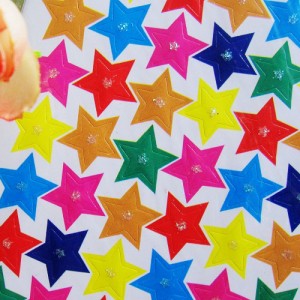In modern times, people use bumper stickers to convey a variety of messages. Humor, religion, and advertisement are among the numerous themes of the messages that grace the back end of vehicles on the road. Over the course of seventy years, the public’s love affair with bumper stickers has grown into a pop culture frenzy, creating a giant industry of design and sticker printing.
Somewhere around the 1930’s or 40’s, the “king of bumper stickers,” Forest P. Gill, hatched the idea to tie messages onto the bumpers of automobiles with wire. It didn’t take long for the world at large to catch onto the idea and realize the great potentials that could be utilized. Gill imagined the obvious next step of using adhesive backing, instead of wire, as a means for securing these messages, and fathered the trend that has entertained rush hour drivers for decades.
What about the process? How do the sticker printing pros take the “Hey, that should be a bumper sticker!” idea to a finished product? Bumper stickers are created through a process of careful attention, industry “know how”, and, of course, there is some elbow grease involved in sticker printing.
Obviously there has to be an idea for a bumper sticker. This could be a political slogan, humorous phrase, or any motif imaginable. The process truly begins with a designer, or artist. The sticker printing industry employees thousands of graphic artists trained to use computer software for creating a visual representation of ideas. Many bumper stickers are simple in design and only rely on a typeface to spice up their message; however, modern sticker printing techniques allow for bumper stickers to be printed in a variety of shapes and with virtually any image imaginable. The later requires the skills and imagination of graphic designers.
From the desktop of the designers, the concept migrates to the guts of the sticker printing facility. The process of screen printing is used in the production of most bumper stickers, and also requires a professional hand. Screen printing is a process which begins with a screen like material stretched over a frame. Most of the screen is impenetrable, but an area matching the shape of the design will allow for ink to pass through. This creates a stencil of the bumper sticker. A screen must be made for each color that is to be used in the sticker printing.
For the next step in the process, ink is poured onto one end of the screen, creating a reservoir. A squeegee is then pulled across the screen forcing the ink through the stencils. Underneath the screen lies the sticker material, usually vinyl. Once a set of stickers has ran through the process, they are allowed to dry, and then the next color is applied via the same method. It sounds simple, but careful attention has to be made with the mixing of the inks, and screen to sticker alignment.
After the stickers are finished, they need to be cut. Several stickers are screened on one page in the sticker printing process, creating many pages with multiple stickers on each. The cutting process is mechanized, so a large stack of printed pages can be cut in one cutting. The process can be dangerous for those who are unfamiliar with the machinery, so again, a professional’s touch is needed.
The rest of the sticker printing process is mostly packaging, shipping, merchandising, and all the other steps that deliver the wit on vinyl to a vehicles posterior, except for one final step. The hard work of the sticker printing pros is not complete until that bumper sticker is firmly attached to a vehicle.


